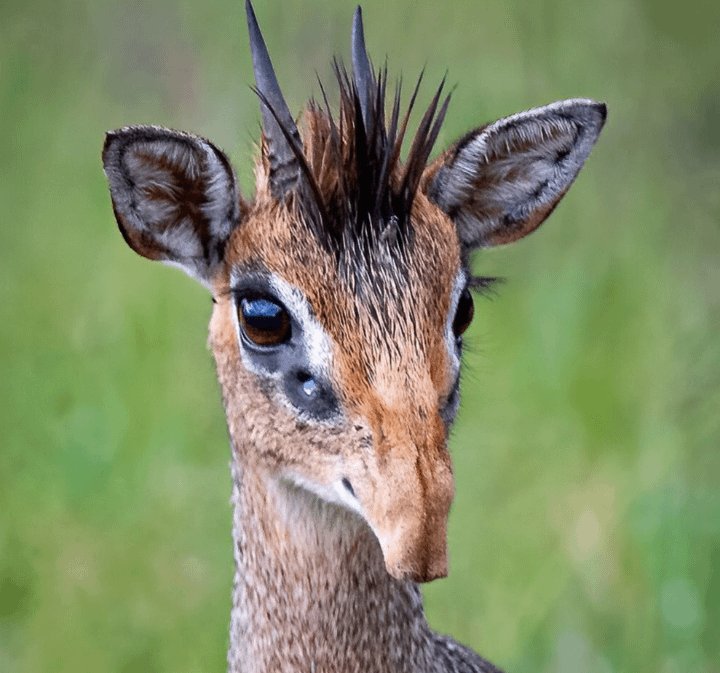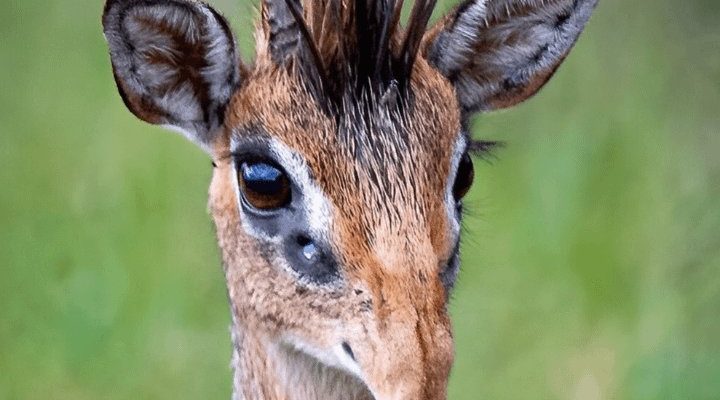
Imagine walking through the African bush, spotting one of these adorable animals darting among the bushes. You might be curious, wondering about their behavior and whether they pose any threat to humans. So, let’s dive into the world of the dik-dik and explore whether there’s any reason to be afraid of these pint-sized critters.
What is a Dik-Dik?
Dik-diks are small antelopes found in the bushlands of East Africa. They belong to the genus *Madoqua* and are known for their distinctive features—like their elongated noses and big, expressive eyes. On average, they weigh around 10-15 pounds and measure about 12-16 inches in height. These little guys are primarily herbivores, munching on leaves, shoots, and fruits, which keeps them busy throughout the day.
One fascinating aspect of dik-diks is their secretive nature. They typically forage during the dawn and dusk hours, making them a bit elusive. While they might seem timid, they have a unique way of communicating with each other through a series of whistles and barking sounds, especially when threatened. Their size, however, makes them prey for larger animals like leopards and hyenas, which means adaptability is key to their survival.
Now, when people think of danger in the animal kingdom, they might picture ferocious beasts, not something as small as a dik-dik. But it’s crucial to understand their behavior and environment to answer the burning question: can they actually be dangerous to humans?
Understanding Dik-Dik Behavior
Dik-diks are generally shy and non-aggressive animals. Their first instinct when faced with danger is to flee. You might be wondering, “What can they do if cornered?” The truth is, they usually try to escape rather than confront. However, like any animal, they can become defensive if they feel threatened.
Dik-diks possess sharp hooves that are capable of delivering a painful kick if they’re pushed into a corner. While their size makes them appear harmless, consider this: if a small creature feels threatened, it may act in ways that surprise us. Their best defense is their speed and ability to navigate through dense bushes, making it hard for predators—and humans—to catch them.
While they don’t seek out confrontation, it’s essential to respect their space. If you happen to come across one in the wild, it’s best to observe from a distance. After all, wildlife encounters should be about appreciation, not aggression.
Are Dik-Diks Aggressive Towards Humans?
When it comes to human interaction, dik-diks are mostly harmless. They don’t tend to approach humans unless they’ve been habituated to human presence, which is typically rare. In areas where humans and dik-diks coexist, they might appear more curious than aggressive, often darting away at the slightest hint of trouble.
However, it’s worth noting that any wild animal can act unpredictably. For example, if a dik-dik perceives a human as a threat—especially if there are young fed nearby—it might display defensive behaviors. These can include snorting or adopting a posture that signals readiness to flee or fight.
So, while they’re not aggressive by nature, it’s crucial to give these charming creatures space and not provoke them. Avoiding direct eye contact can also help, as in the animal kingdom, it may be perceived as a challenge.
Can a Dik-Dik Transmit Diseases?
One potential concern with any wild animal, including dik-diks, revolves around disease transmission. Like many other wildlife species, dik-diks can carry parasites and diseases that could pose risks to domestic animals and, in some cases, humans. Some common diseases include:
- Tick-borne diseases: These can affect both wildlife and humans.
- Brucellosis: A bacterial infection that may spread from animals to humans.
- Hydatid disease: Caused by tapeworms that can affect various mammals.
While the likelihood of contracting a disease from a dik-dik is low, it’s not impossible. So if you’re exploring areas where these animals roam, practicing basic hygiene—like washing your hands after being outdoors—can minimize your risk.
How to Safely Observe Dik-Diks in the Wild
If you’re lucky enough to spot a dik-dik in the wild, there are a few guidelines to follow to ensure both your safety and the animal’s peace of mind:
1. Keep Your Distance: Always maintain a respectful distance. Use binoculars or a camera with a zoom lens to watch them without getting too close.
2. Stay Quiet: Loud noises can startle dik-diks, prompting them to flee. Keeping your voice low and movements slow can help.
3. Avoid Feeding Them: While it may be tempting to feed animals in the wild, it can disrupt their natural behaviors and make them dependent on humans for food.
4. Do Not Corner Them: If you’re lucky to see a dik-dik, try not to surround or block their escape routes. This can lead to defensive actions and put both you and the animal at risk.
By following these simple guidelines, you can enjoy the beauty of these charming creatures while ensuring both parties remain safe.
The Role of Dik-Diks in Their Ecosystem
Dik-diks play a vital role in their ecosystem. As herbivores, they help control vegetation growth by grazing on shrubs and leaves. This, in turn, supports a balanced habitat for various species. Moreover, by serving as prey for larger animals, they contribute to the food chain, maintaining the balance of their environment.
Their foraging habits can also benefit other animals. When dik-diks browse through bushes, they may inadvertently create openings for smaller animals, allowing them to thrive in areas that would otherwise be too dense. They’re like little gardeners of the savanna, shaping the landscape in their own unique way.
Understanding their importance in the ecosystem underscores why we should respect their space and protect their habitats. Every animal has a role to play, and dik-diks are no exception.
In summary, while dik-diks are small and possess a few defensive traits, they generally pose no danger to humans. Their shy nature and tendency to avoid confrontation make them more fascinating than frightening. Like any wild animal, it’s essential to approach their habitat with respect and caution.
So, if you ever find yourself wandering through the African bush, take a moment to appreciate these delicate creatures from a distance. With their unique behaviors and roles in the ecosystem, dik-diks remind us of the beauty and complexity of wildlife. Embracing that beauty doesn’t require fear; it just takes a bit of understanding and respect.

